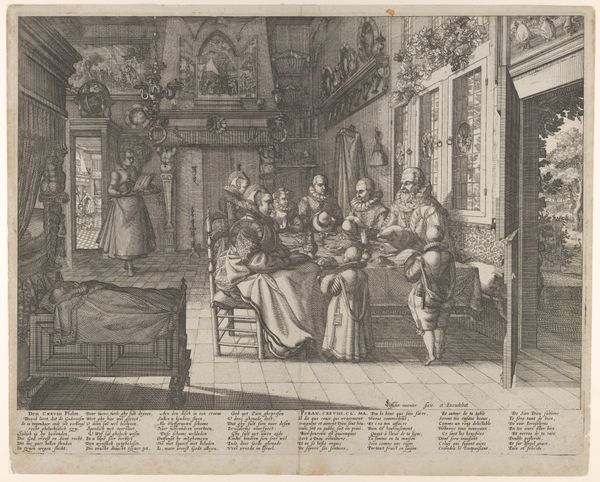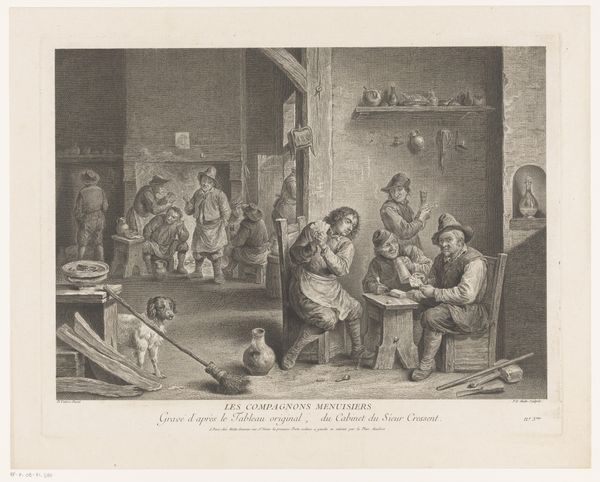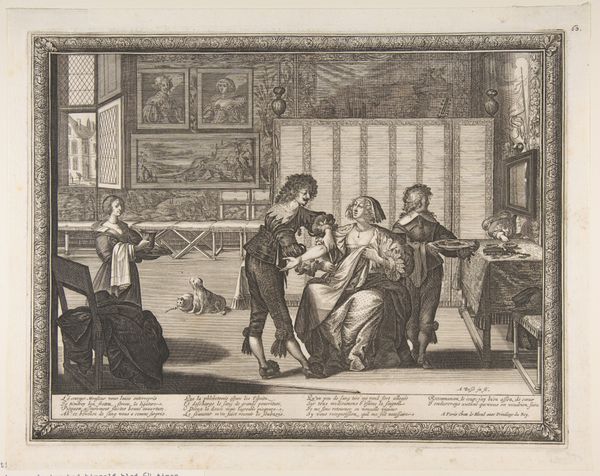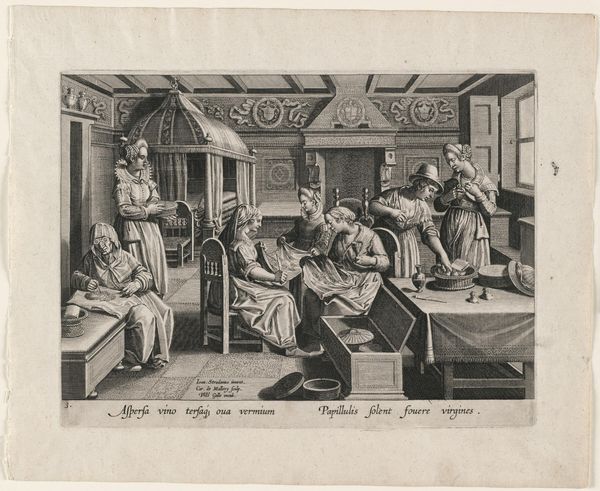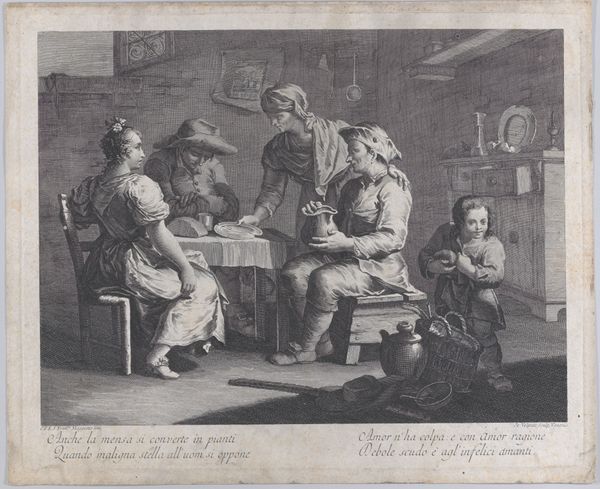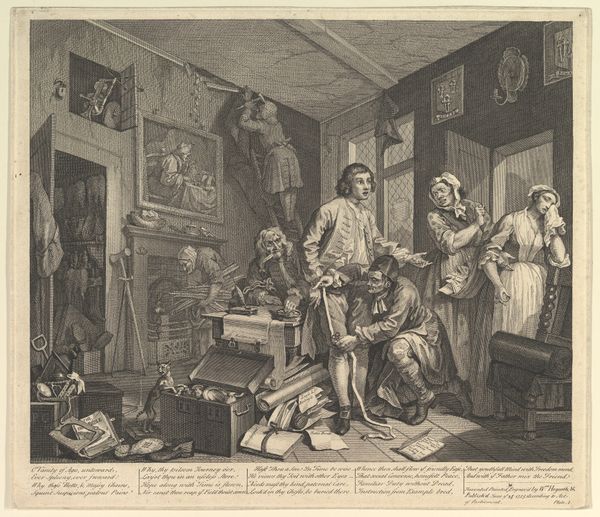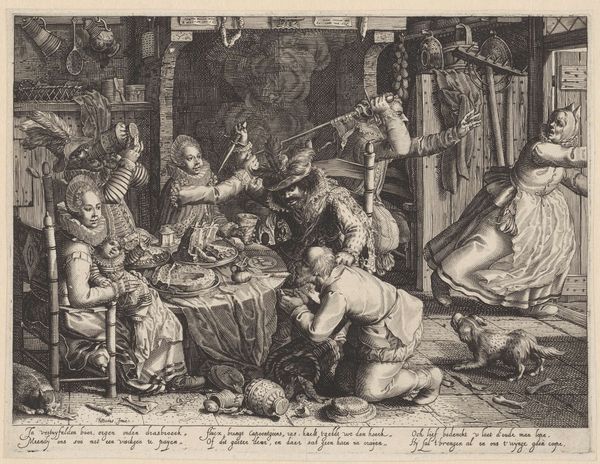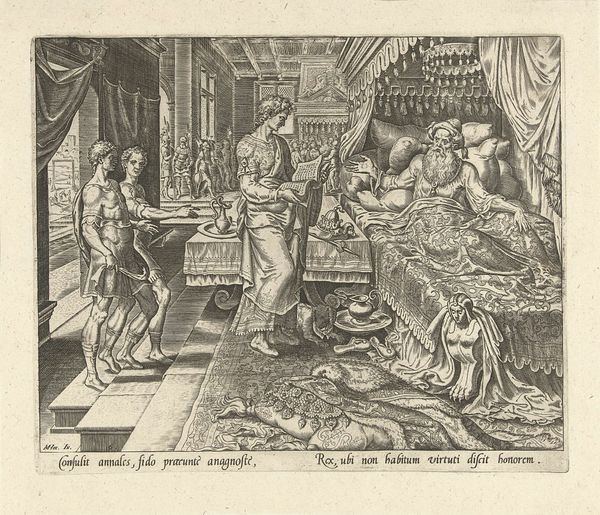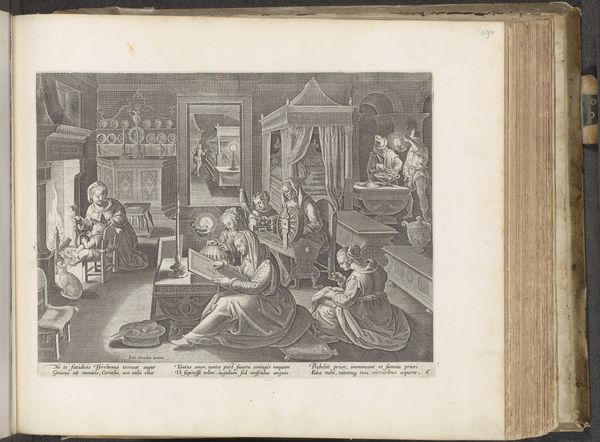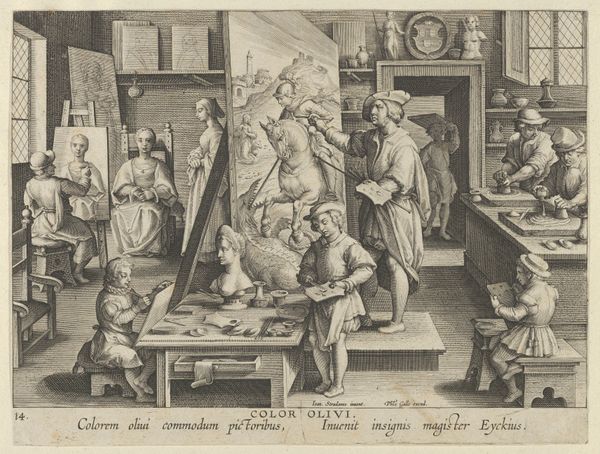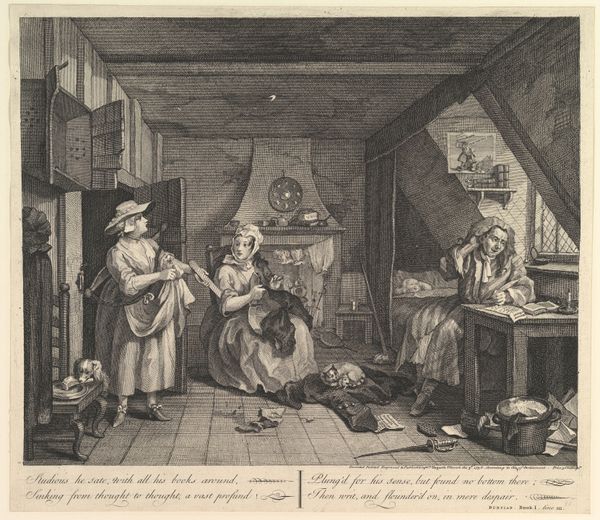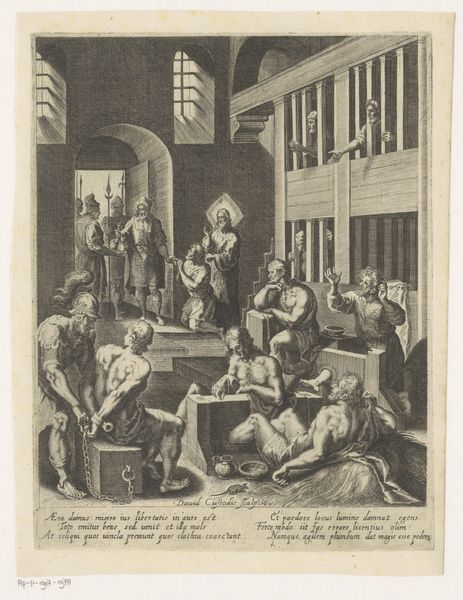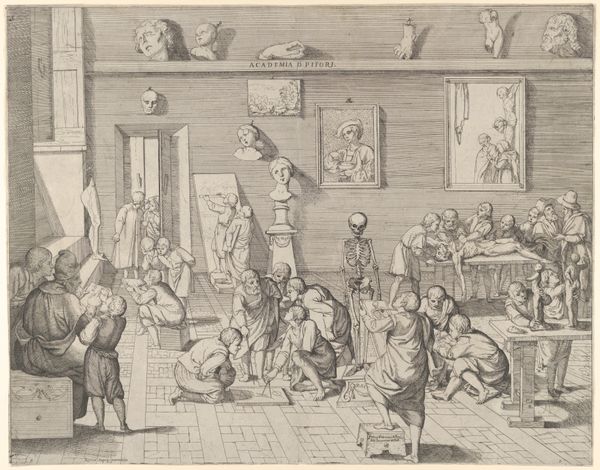![New Inventions of Modern Times [Nova Reperta], The Discovery of Guaicum as a Cure for Veneral Infection, plate 6 by Jan Collaert I](/_next/image?url=https%3A%2F%2Fd2w8kbdekdi1gv.cloudfront.net%2FeyJidWNrZXQiOiAiYXJ0ZXJhLWltYWdlcy1idWNrZXQiLCAia2V5IjogImFydHdvcmtzLzQ4YTIxZDYyLWRhOWItNGE1Yy1hYTczLTE1MzY3NTI1Y2Q3Yi80OGEyMWQ2Mi1kYTliLTRhNWMtYWE3My0xNTM2NzUyNWNkN2JfZnVsbC5qcGciLCAiZWRpdHMiOiB7InJlc2l6ZSI6IHsid2lkdGgiOiAxOTIwLCAiaGVpZ2h0IjogMTkyMCwgImZpdCI6ICJpbnNpZGUifX19&w=3840&q=75)
New Inventions of Modern Times [Nova Reperta], The Discovery of Guaicum as a Cure for Veneral Infection, plate 6 1595 - 1605
0:00
0:00
drawing, print, engraving
#
drawing
# print
#
figuration
#
men
#
genre-painting
#
history-painting
#
northern-renaissance
#
engraving
Dimensions: sheet: 10 5/8 x 7 7/8 in. (27 x 20 cm)
Copyright: Public Domain
Curator: This print is "New Inventions of Modern Times, The Discovery of Guaicum as a Cure for Veneral Infection," plate 6, made sometime between 1595 and 1605 by Jan Collaert I. It resides here at the Metropolitan Museum of Art. Editor: The print immediately strikes me as having an incredibly intimate feel, almost like a domestic interior imbued with a quiet sorrow. The use of line is exquisite, creating subtle gradations in tone and depth. Curator: It's a remarkable Northern Renaissance engraving, offering insight into the discovery of guaicum as a supposed remedy for syphilis. Observe how the composition divides the space: a patient receiving care on one side and, on the other, the laborious preparation of the medication. Editor: Indeed. The materiality is crucial here. Notice the figure grinding the wood – likely guaicum – in the foreground. The artist directs our gaze not only to the 'what' of the cure, but the 'how' and by 'whom'. Consider the social stratification inherent in such an image; the patient being cared for versus the laborer producing the means of his convalescence. Curator: Precisely. The mirroring effects between the scenes draws attention to the performative rituals within: on the right, a domestic setting filled with culinary vessels contrasts the supposed ritualistic scene where men holding what appear to be lit candles assist the man on the sick bed, the implied ritual and, consequently, it's performative quality are brought to the surface. Note as well, the artist's intentional inclusion of different surfaces and light in different corners to establish the perspectival harmony of the setting. Editor: And within the patient's room there is a painting, adding a secondary picture plane; is this an added dimension to the discovery's historic narrative? Or is the composition meant to question how 'new' this so-called modern invention truly is? Curator: I think both points stand true. The mirror within reflects an artificiality which could point to an ironic observation regarding human ingenuity, and the material processing of trees within the picture. Editor: This detailed, evocative piece has really made me consider the socioeconomic circumstances intrinsic to both disease and healing of this historical period. Curator: And for me, how Collaert used rigorous design to juxtapose different dimensions to create, not simply an image of supposed modern discovery, but also an ironic view of that time.
Comments
No comments
Be the first to comment and join the conversation on the ultimate creative platform.
